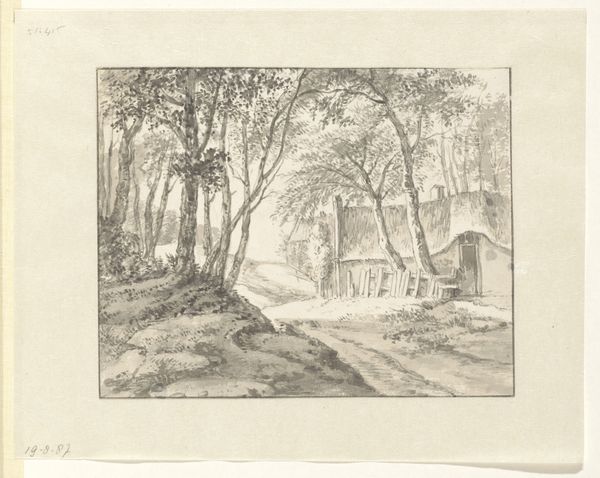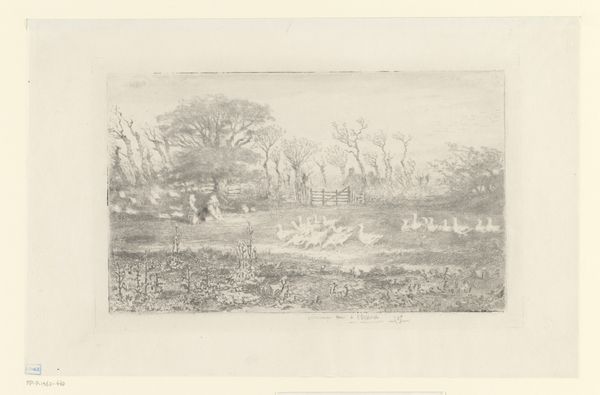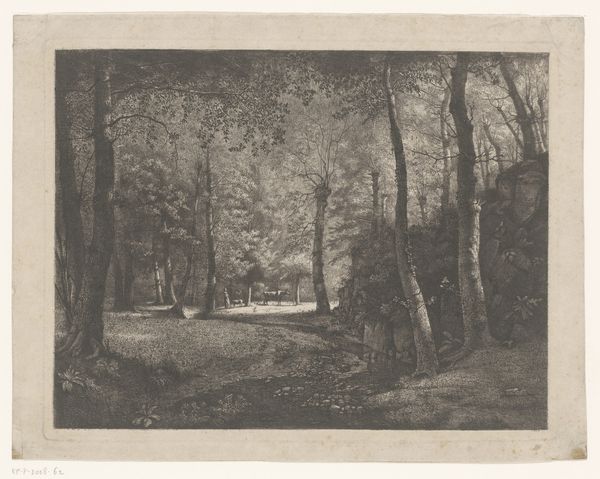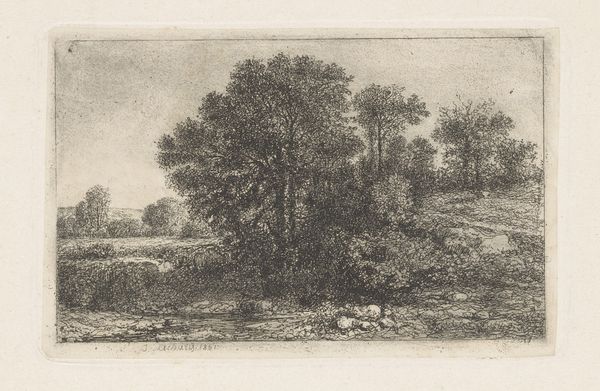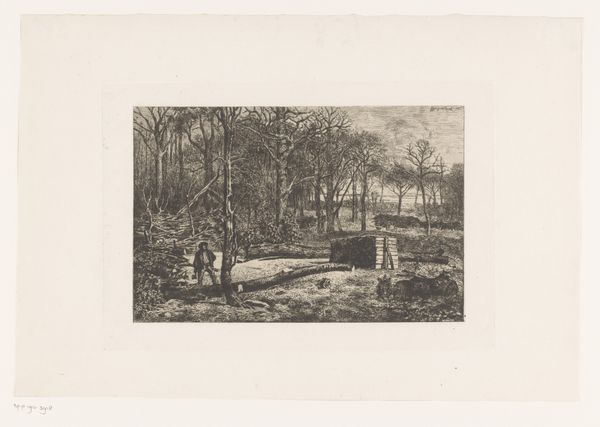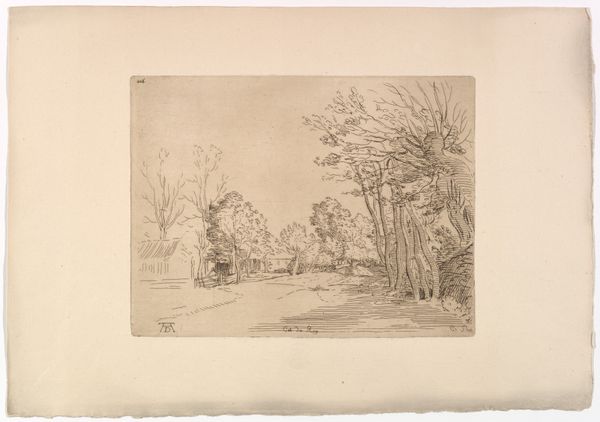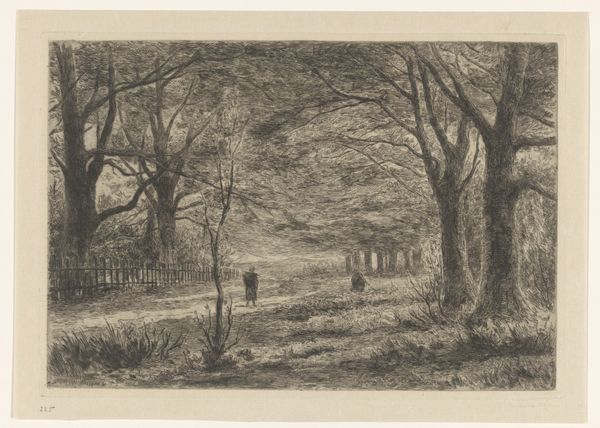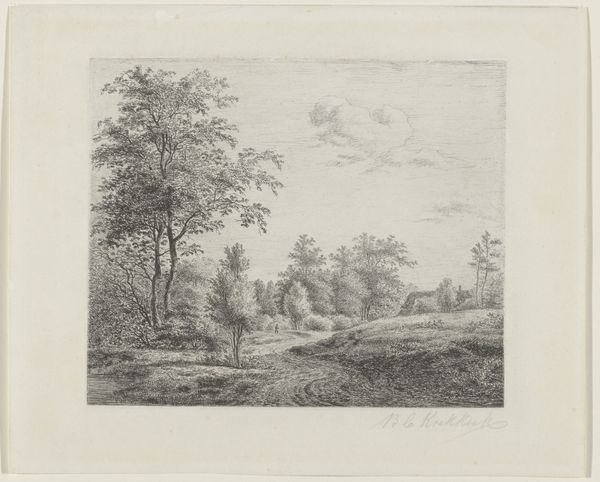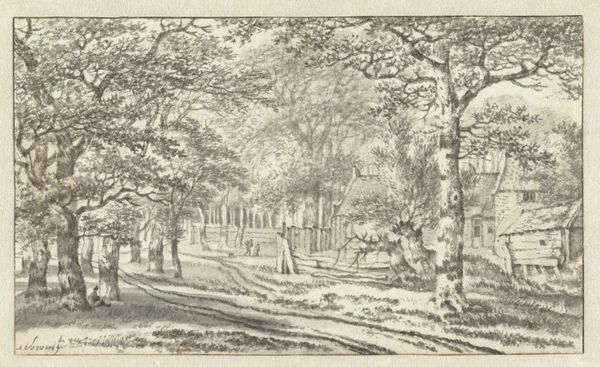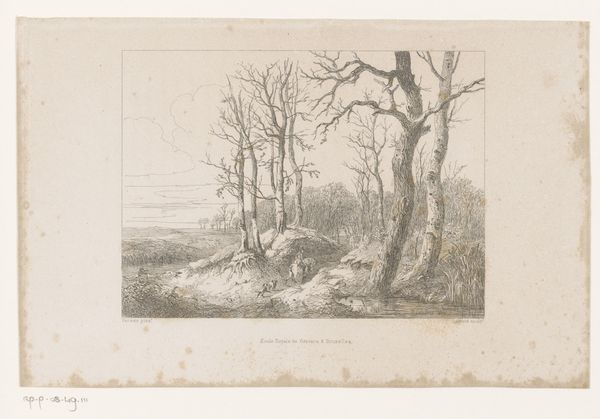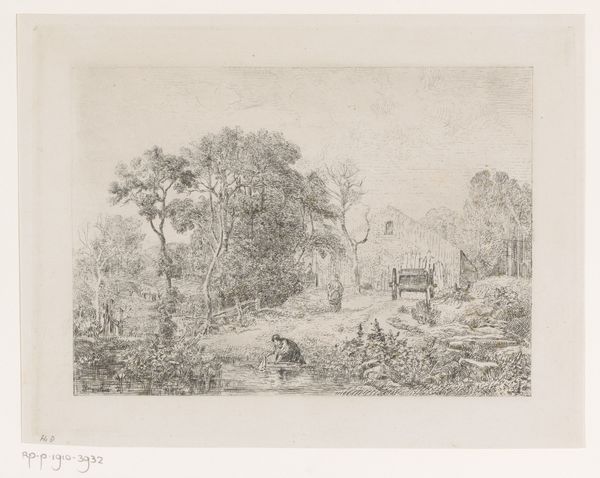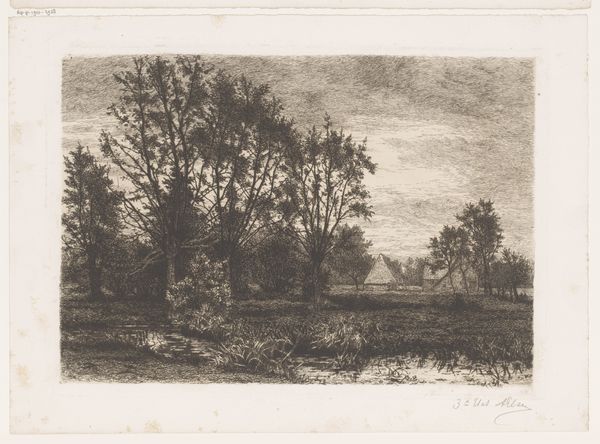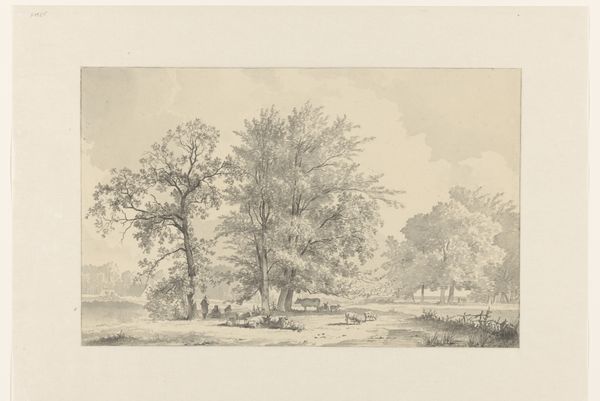
print, etching
# print
#
etching
#
landscape
#
etching
#
line
#
genre-painting
#
realism
Dimensions: height 187 mm, width 286 mm
Copyright: Rijks Museum: Open Domain
Editor: We’re looking at "Woodcutter in the Forest" by Lambert Jacquelart, made sometime between 1830 and 1910. It’s an etching, a print made with fine lines. It feels quiet and a bit melancholic to me. What symbols or cultural meanings do you see embedded within this seemingly simple landscape? Curator: I'm immediately drawn to the figure himself – the woodcutter. In folklore, the forest is often a space of transformation, a threshold. Woodcutters, then, become liminal figures themselves, mediating between the cultivated and the wild. Does his stance, arms outstretched, remind you of any other iconic images? Editor: You mean like… a crucifixion pose, perhaps? It's subtle, but now I see it! Curator: Exactly! Is it intentional? Maybe. But consider the layers of meaning: sacrifice, labor, the consuming needs of society placed upon the natural world. Notice the stacks of timber, almost like miniature monuments. What do those suggest to you about progress and preservation? Editor: I hadn't considered that. The act of clearing the forest becomes a kind of building, a resource for civilisation, I suppose. It’s a tension between man and nature, resource and consumption, that is expressed in so few delicate lines. I never would have gotten all of that! Curator: It is always about a question of what’s been encoded, consciously and unconsciously, over time. We look, and these images, these gestures, awaken collective memories within us. Editor: I'll never look at a landscape the same way again! Thanks for the insights. Curator: And thank you. These conversations are crucial to understanding how art connects to the present moment and reflects the depths of the collective human experience.
Comments
No comments
Be the first to comment and join the conversation on the ultimate creative platform.
